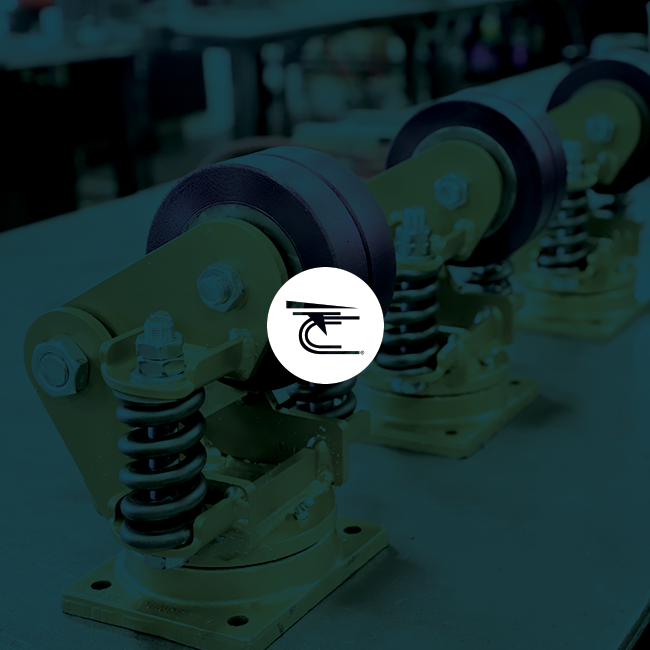

In any manufacturing operation, efficiency is critical – moving components with precision, from point A to B, can literally make the difference when meeting critical deadlines and ensuring employee safety and productivity.
In previous blogs, we have discussed how choosing the right heavy-duty caster for the job can be a key component to manufacturing efficiency. Often overlooked, however, is the manner in which these industrial casters are mounted.
It’s easy to assume that by mounting the heavy-duty casters at the outermost edges of your transport, you’ll get the most bang for your buck. However, in our experience, we’ve found that there are several mounting combinations – aimed at gaining certain steering or handling characteristics – that can improve the performance of your heavy-duty caster wheels.
For your consideration, we present the top five, along with their properties, benefits and drawbacks.
This cart configuration consists of four swivel casters at the corners of the cart. The benefit is the cart can be moved in any direction without the need for turning around. The drawback is the cart can be hard to control when moving in a straight line. An easy fix to this is to equip the industrial casters with swivel locks. Then when the cart needs to be moved or towed in a straight line, the rear casters can be locked.
This is the most popular configuration for industrial casters on carts and trucks. It uses two rigid casters in the back and two swivel casters in the front. This configuration turns easily and tracks very well when towed. The cart cannot freely move in any direction, to make a 90° turn the cart must be pulled around on a pivot of the rigid casters.
This style uses four rigid casters set in a diamond pattern, and is used on tilt-type cart configurations. This is the lowest-cost configuration for carts and trucks. It can pivot on the center wheels to turn or do complete 360-degree rotations. The drawback is it cannot carry heavy loads, because only three casters are in contact with the floor at one time, and it cannot be pushed sideways.
Another variation of this caster configuration (not pictured) is to replace the two rigid heavy-duty casters at the front and back of the cart with swivel casters. This allows the maneuverability of the tilt type cart, but allows for the tilt action to be eliminated and heavier loads to be carried. This type, with two rigid and two swivel casters, is slightly less cost-effective than the standard diamond pattern with four rigid casters.
This style uses two rigid industrial casters in the rear of the cart, along with two axle-mounted caster wheels in the front of the cart. This configuration is ideal for heavy loads and is usually power-drawn. The disadvantage to this type of cart is that it is not easily maneuvered manually.
This configuration is similar to the four-wheel diamond caster patterns discussed above, but can carry heavier loads and are better suited for very long carts. This caster pattern allows the cart to turn in its own footprint, and the cart style can either be tilt type or non-tilt for even greater load capacity.
The engineering staff at Caster Concepts will work closely with you to help decide which cart configuration is best for your application. Good planning up front will assure the proper use of the rigid and swivel casters for long-term performance.
If you would like to configure your own industrial casters right now and receive a downloadable CAD model, visit our Configurator page.